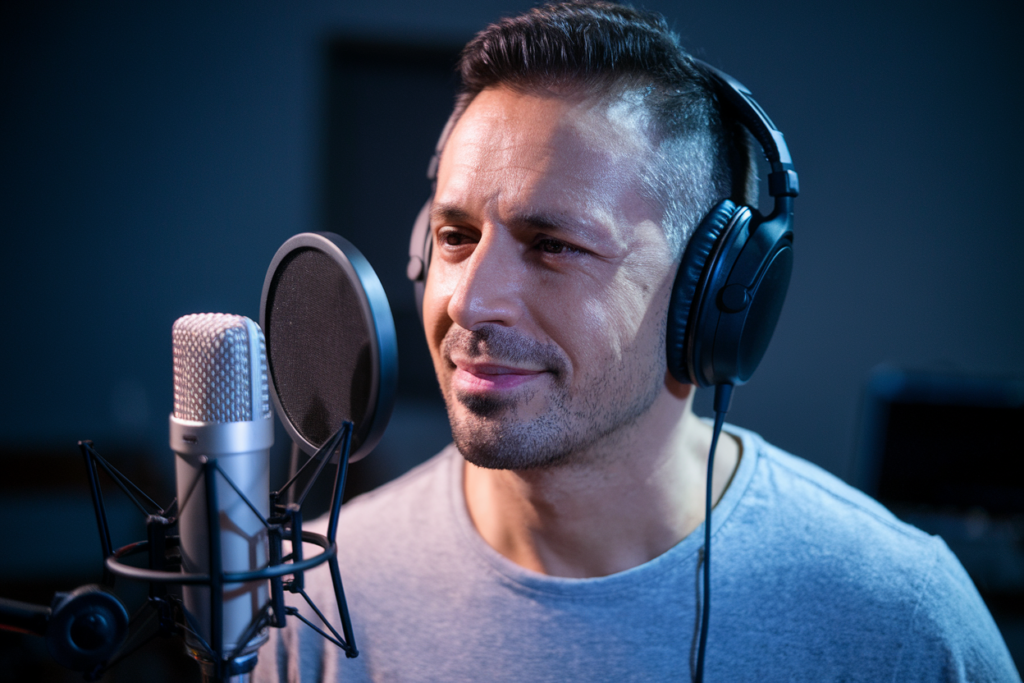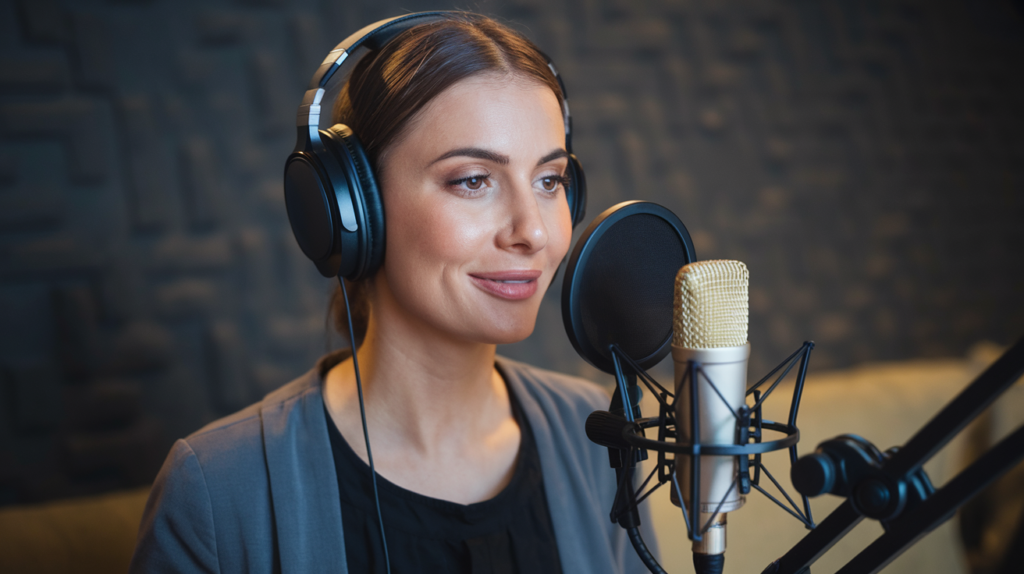Key Takeaways
- Understanding Variations: Turkish accents vary significantly across regions, reflecting unique linguistic features and cultural influences essential for appreciating Turkey’s identity.
- Cultural Significance: Accents serve as markers of regional pride and community belonging, emphasizing the importance of accurate portrayals in media to avoid stereotypes.
- Historical Context: Early media representations often relied on exaggerated stereotypes; however, there has been a positive shift toward hiring authentic voice talent in contemporary productions.
- Impact on Perception: Media depictions shape public perceptions of Turkish culture; reliance on clichés can lead to misunderstandings about individuals with Turkish accents.
- Positive Representations Matter: Authentic voices in film, music, and literature enhance storytelling and foster cultural understanding by showcasing the rich diversity within Turkey.
- Support Inclusivity: Engaging with well-represented Turkish accents promotes inclusivity in media narratives and helps combat harmful stereotypes.
Ever noticed how Turkish accents are portrayed in movies and TV shows? The representation of Turkish accents in media often shapes perceptions, but it can also lead to stereotypes that don’t reflect reality. You might wonder why this matters—after all, aren’t they just characters on a screen?
Understanding the nuances of accent representation is crucial for fostering cultural awareness and appreciation. When you dive into how these accents are depicted, you’ll uncover not just entertainment value but also deeper societal implications. Let’s explore how the media influences your perception of Turkish culture and why accurate representation can make a world of difference.
Overview of Turkish Accents
Turkish accents vary significantly across regions, each reflecting unique linguistic features and cultural influences. Understanding these variations is essential for appreciating the rich tapestry of Turkish identity.
Geographic Variations
Turkish accents can differ widely depending on geographic location. For instance, speakers from Istanbul often exhibit a more neutral accent that many consider standard. In contrast, those from rural areas in Anatolia may have distinct pronunciations and intonations influenced by local dialects. Coastal regions like İzmir showcase softer consonants and melodic speech patterns, while accents from southeastern cities such as Gaziantep carry noticeable influences from Arabic due to historical connections. Recognizing these geographical nuances enhances your understanding of how culture shapes language.
Cultural Significance
Accents play a crucial role in cultural expression within Turkey. They serve as markers of regional pride and identity, conveying social status and community belonging. The way someone speaks can reveal their origins, personal history, or even political affiliations. Moreover, representation in media often simplifies these complex layers into stereotypes that misrepresent the diversity inherent in Turkish culture. By recognizing the importance of accurate portrayals in film and television, you contribute to a broader dialogue about cultural sensitivity and appreciation.
Understanding Turkish accents helps foster deeper connections with the culture itself while promoting better representation in media narratives surrounding Turkish identities.
Historical Context
The representation of Turkish accents in media reflects a rich tapestry of cultural and linguistic history. Understanding this context reveals how media shapes perceptions and influences societal attitudes.
Early Representation in Media
Early portrayals of Turkish characters often leaned on exaggerated stereotypes, focusing on broad generalizations rather than authentic voices. Many films and television shows relied on voiceovers that lacked nuance, leading to one-dimensional representations. These depictions frequently emphasized foreignness or otherness, which didn’t accurately reflect the diverse reality of Turkish culture and language. The lack of skilled voice actors who could authentically convey regional accents contributed to misunderstandings about Turkish identities.
Evolution Over Time
Over time, there’s been a noticeable shift in how Turkish accents are represented in media. As audiences became more aware of cultural sensitivities, creators began hiring voice talent with genuine connections to the accents being portrayed. This change allowed for richer storytelling that honors regional diversity within Turkey. Contemporary productions often feature voiceover artists who bring authenticity to their roles, capturing the unique characteristics of various Turkish dialects.
Innovations in technology have also played a role; digital platforms now provide opportunities for diverse voices to be heard globally. With increased access to high-quality recordings and professional voiceover talent, media can better reflect the true essence of Turkish culture while challenging outdated stereotypes.
Current Depictions in Media
Media representations of Turkish accents significantly influence public perceptions and cultural understanding. Various platforms—films, television shows, music, and literature—play a crucial role in shaping these depictions.
Film and Television
Films and TV shows often showcase Turkish accents through diverse character portrayals. In many cases, however, these depictions lean towards stereotypes rather than authenticity. For example, characters might exaggerate certain vocal traits to convey humor or villainy, which can reinforce negative stereotypes about Turkish culture.
Recent productions are shifting this trend by hiring voice talent who genuinely reflect the regional characteristics of Turkish accents. This approach enables more accurate storytelling that resonates with viewers on a deeper level. By using skilled voice actors familiar with specific accents, filmmakers create richer narratives that honor Turkey’s diverse linguistic heritage.
Music and Literature
Music and literature also serve as powerful mediums for accent representation. Artists often incorporate their regional dialects into lyrics or prose, reflecting authentic experiences tied to their backgrounds. This adds depth to their work while fostering appreciation for the cultural nuances within the Turkish language.
In literary works featuring dialogue written in various accents, readers gain insight into characters’ identities and experiences. Whether through colloquial expressions or phonetic spellings that capture pronunciation variations, authors bring authenticity to their narratives.
Ultimately, both music and literature contribute to a broader understanding of Turkish culture by highlighting its linguistic diversity through genuine representation.
Stereotypes and Misconceptions
Stereotypes and misconceptions surrounding Turkish accents frequently emerge in media portrayals. These representations often simplify complex cultural identities, leading to misunderstandings about Turkish people and their diverse backgrounds.
Common Tropes
Common tropes include the “foreign villain” or the “exotic love interest,” where characters with Turkish accents are relegated to narrow roles that don’t reflect reality. Such stereotypes perpetuate a one-dimensional view of Turkish culture. They ignore the richness found in regional variations, like the soft consonants of İzmir or the distinct pronunciations from Gaziantep. By relying on these clichés, creators miss an opportunity to showcase authentic voices that resonate more deeply with viewers.
Impact on Public Perception
The impact on public perception can be profound. When you constantly see exaggerated portrayals of individuals with Turkish accents in films or shows, it shapes how society views those who speak with such accents. Many people may unconsciously associate certain traits or behaviors with these stereotypes rather than recognizing individual differences. However, as media landscapes evolve, there’s a shift towards hiring voice talent who genuinely embody the nuances of various Turkish accents. This change fosters greater understanding and appreciation for Turkey’s linguistic diversity while challenging outdated views.
By embracing authentic representation within all forms of storytelling—be it through film, TV, music, or literature—you contribute to a broader understanding of cultural identities and help combat harmful stereotypes that persist in popular culture.
Positive Representations
Positive representations of Turkish accents in media play a crucial role in fostering cultural understanding. They help highlight the rich diversity within Turkey and showcase authentic voices that reflect regional nuances.
Authentic Voices
Authentic voices contribute significantly to accurate portrayals of Turkish culture. When filmmakers and producers hire voice talent who genuinely embody various Turkish accents, they create more relatable characters. This approach enhances storytelling by allowing audiences to connect with the characters on a deeper level. By featuring genuine voice artists, productions can break away from clichés and stereotypes that often cloud perceptions of Turkish identities. These true-to-life performances enrich narratives, making them more impactful and resonant.
Contributions to Cultural Diversity
Contributions to cultural diversity through positive representation are vital for broadening perspectives. Media that accurately showcases Turkish accents celebrates the country’s linguistic richness while challenging preconceived notions. Diverse characters speaking with their authentic accents invite viewers into different worlds, encouraging appreciation for unique backgrounds and experiences. This representation fosters empathy, helping audiences understand the complexities of cultural identities beyond surface-level stereotypes. As you engage with media featuring well-represented Turkish accents, you support a shift towards inclusivity and authenticity in storytelling that benefits everyone involved.
Conclusion
The representation of Turkish accents in media holds significant power in shaping cultural perceptions. By embracing authenticity and diversity, you can help challenge stereotypes and promote a richer understanding of Turkish identities. As the landscape evolves, it’s essential to support productions that prioritize genuine voices and nuanced portrayals.
These efforts not only enhance storytelling but also foster empathy and connection among audiences. When you appreciate the complexities of regional accents, you’re contributing to a more inclusive narrative that celebrates cultural richness. By advocating for accurate representations, you play a vital role in transforming how Turkish culture is perceived and appreciated globally.
Frequently Asked Questions
What is the main focus of the article on Turkish accents in media?
The article focuses on how Turkish accents are portrayed in movies and TV shows, emphasizing that these representations can shape perceptions and contribute to stereotypes. It highlights the need for accurate depictions to foster cultural awareness and appreciation.
Why are regional variations in Turkish accents significant?
Regional variations reflect unique linguistic features and cultural influences within Turkey. Each accent carries its own identity, showcasing the richness of Turkish culture and contributing to regional pride.
How have portrayals of Turkish accents evolved over time?
Portrayals have shifted from exaggerated stereotypes to more nuanced representations, with creators increasingly hiring authentic voice talent. This change has led to richer storytelling that honors Turkey’s diverse accents.
What impact do stereotypes about Turkish accents have on public perception?
Stereotypes simplify complex identities, leading to misunderstandings about Turkish culture. They create one-dimensional views that can negatively influence societal attitudes toward individuals with Turkish accents.
How can positive representation of Turkish accents benefit audiences?
Positive representations foster cultural understanding by showcasing diversity within Turkey. Authentic voices enhance storytelling, allowing audiences to connect deeply with characters while breaking away from clichés and promoting inclusivity.







